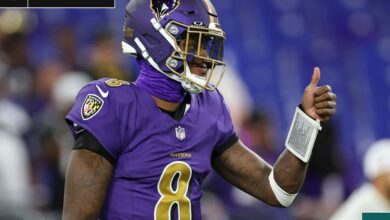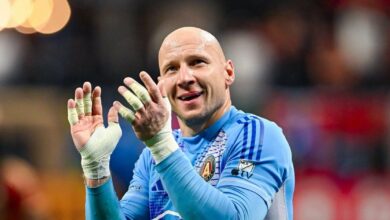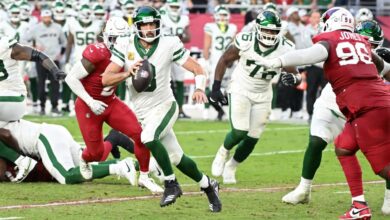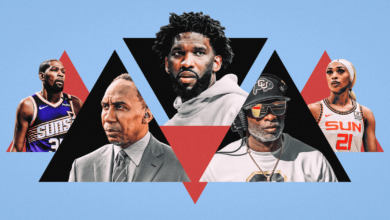Inside Shohei Ohtani’s historic, tumultuous, as-yet unfulfilled first Dodgers season
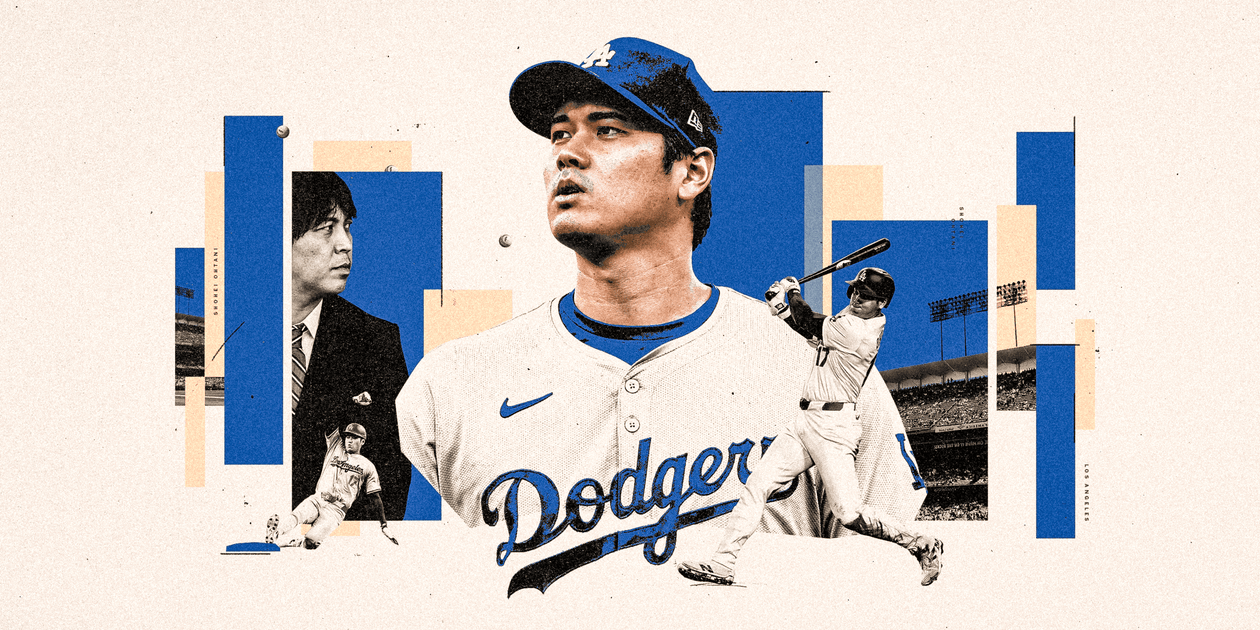
Shohei Ohtani did not build this place. It only feels that way. Dodger Stadium existed long before he was born and figures to remain a beacon tucked in the canyons of Chavez Ravine long after his career ends. But the ballpark has, in its 63rd year, been remade in his image. New outfield billboards hawk Japanese spirits and Japanese probiotics and Japanese airlines. Pregame tours are flooded with visitors from abroad wearing crisp No. 17 jerseys. When the Dodgers handed out an Ohtani bobblehead, the throng sprawling down Vin Scully Boulevard assembled 10 hours before first pitch.
In his first season as a Dodger, Ohtani established himself as the center of the franchise’s universe. He thrived underneath the spotlight of his 10-year, $700 million contract. His boost to the financial bottom line made team officials giddy — “well beyond what we imagined,” team president Stan Kasten said. He compartmentalized after a shocking betrayal from his closest confidant and responded with a historic offensive season. He has done everything except the thing by which this entire endeavor will be judged: Win a championship.
“It’s going to really test his patience and discipline,” Dodgers manager Dave Roberts told The Athletic the day before the team clinched its 12th consecutive postseason berth last week. “Knowing that he’s waited his entire life, essentially, to be in the major-league postseason. It’s going to be fascinating to watch.”
Ohtani is no stranger to external obsession. Some in Japan describe him as “kanpeki na hito,” which roughly translates to “the perfect person.” The Dodgers do not seem to disagree. Roberts has suggested he may become the greatest player in the history of baseball. “One of one,” first-base coach Clayton McCullough called him. “I don’t see how there is anybody more talented who has ever played this game than him,” teammate Kiké Hernández said. Added reliever Daniel Hudson, “I feel pretty lucky to have a front-row seat for him every night.”
When Ohtani appears at Dodger Stadium, conversations cease, eyeballs widen and cameras click. One afternoon in early September, Ohtani climbed the dugout steps and walked into the outfield. He was trailed by his interpreter, Will Ireton, and a member of the training staff. A flock of 10 reporters hustled down the left-field line and aimed their lenses to record Ohtani completing the mundane act of having a catch. Because no act committed by Ohtani can be considered inconsequential, not as he moves closer toward pitching again. The Dodgers had insisted Ohtani would not take the mound in 2024 as he recovered from elbow surgery — at least until Roberts upgraded the goal this month from impossible to improbable. As Roberts told MLB Network radio, “It would be storybook.”
It is the sort of story that only Ohtani could write.
For the past four years, he has bent the game of baseball to his will. Even in 2024, despite being unable to showcase his two-way talents, he broke barriers. Recognizing the extra time on his hands, he concentrated on running the bases. In August he celebrated becoming only the sixth player to hit 40 home runs and steal 40 bases in the same season by throwing a bullpen session the next afternoon. Twenty-eight days later, he became the charter member of the 50-50 club, during a game in which he authored one of the most productive offensive days in baseball history. In November, he could become the first designated hitter to collect an MVP trophy.
The ultimate triumph, the validation of this partnership between trail-blazing player and storied franchise, will require more heroics from Ohtani. The Dodgers are likely to win the National League West but will not collect 100 victories for the first time in a full season since 2018. Injuries wrecked the starting rotation. There will be even more pressure on the offense — the unit led, both literally and figuratively, by Ohtani.
Ohtani has already redefined the public’s understanding of the limitations of athletic performance. Can he change the postseason fortunes of the Dodgers? Or will he fall victim to the same October spells that have hounded baseball’s model franchise?
The answer may not depend on whether Ohtani can best the competition. It may depend on whether Ohtani can be the best version of himself.
In the hours before the biggest game of his life, Shohei Ohtani gathered his teammates around him. The men of Samurai Japan clapped as he took the floor inside the home clubhouse at loanDepot Park in Miami. As the group prepared to face Team USA in the finals of the 2023 World Baseball Classic, Ohtani told his countrymen they needed to stow their reverence for their opponents, a collection of big-league All-Stars playing at the sport’s highest level.
“If you admire them,” he said, “you can’t surpass them. We came here to surpass them, to reach the top.”
Ohtani hoisted his team to the summit. After spending the first eight innings as the designated hitter, he trotted to the bullpen to warm up for the ninth. He inherited a one-run lead and a batting order kissed by serendipity: The hitter due up third was Angels teammate Mike Trout, the man Ohtani had supplanted as the sport’s supreme talent. The last pitch of the tournament was an 87-mph slider that swept across the heart of the plate and just beneath the arc of Trout’s bat.
Ohtani chucked his glove, spread his arms and roared. He called the victory “the best moment of my life.” Upon returning to Angels camp, he tried to project how it might feel to reach the MLB postseason. “The atmosphere was like, ‘Now this is baseball,’” Ohtani told reporters. “Honestly, I haven’t been to the World Series. So I can’t even imagine.”

Shohei Ohtani exulted after recording the final out of the World Baseball Classic. (Eric Espada / Getty Images)
The Angels never presented him an opportunity to sniff a wild card, let alone the World Series. In Ohtani’s six seasons in Anaheim, the club never won more than 80 games. The 2023 season encapsulated the futility with a 17-39 collapse after July. Unable to pitch after damaging his right elbow, Ohtani cleared out his locker in the middle of September, left the team and underwent surgery. Free agency beckoned.
In early December, Ohtani met with Dodgers officials at Dodger Stadium. Team chairman Mark Walter awakened Ohtani’s competitive spirit when the owner called his tenure running the club, which included perpetual postseason berths but only one championship, a failure. Ohtani stood in the dugout and gazed upon the 56,000-seat stadium, with the hills of Chavez Ravine beyond the outfield walls, the scenic continuum from the days of Sandy Koufax and Don Drysdale to Kirk Gibson and Orel Hershiser to Clayton Kershaw, Mookie Betts and Freddie Freeman.
A week later, Dodgers president of baseball operations Andrew Friedman received a text from Nez Balelo, Ohtani’s agent from CAA: “You got him. Shohei’s a Dodger.” The contract was heavily deferred so that Ohtani would only be paid $2 million annually during his 10 seasons. The deal kicked off a $1.2 billion spending spree adding Orix Buffaloes ace Yoshinobu Yamamoto and gifted but fragile right-hander Tyler Glasnow. The franchise prepared itself for a banner season: A proliferation of new sponsorships, a re-energized fanbase ready to pack the ballpark and a team projected to demolish the rest of the National League.
The giddiness ended hours before the season’s first game.
On his third night in Seoul, Kasten could not sleep. The jet lag from the 14-hour flight to South Korea for the season-opening series against San Diego had not yet faded. On March 19, his phone buzzed around 3 a.m.
“If you’re up,” the message from Walter read, as Kasten recalled, “call me.”
Walter had received word there might be a scandal brewing around Ohtani. The team was caught off guard, Kasten said. The initial details were alarming: A federal investigation into a Southern California bookmaker had turned up Ohtani’s name attached to wire transfers worth millions of dollars.
“For six to 12 hours, I wasn’t sure where we were,” Kasten said. “Was all of this going to go away? Like, all of this?”
Dodgers officials spent the subsequent day scrambling. The maelstrom swirled around Ippei Mizuhara, Ohtani’s interpreter since joining the Angels in 2018. Mizuhara operated as more than a work colleague. He was considered Ohtani’s close friend and had become something of a caretaker, with access to the worldwide star’s bank accounts. The control permitted Mizuhara to commit, as he later admitted in court, a massive swindle. In the moment, though, Mizuhara attempted another con. With the season about to begin that night, Mizuhara told ESPN he had accrued gambling debts without Ohtani’s knowledge and eventually implored his friend to pay them off. The Dodgers accepted Mizuhara’s initial story.
That night, after an Opening Day victory, Walter called a team meeting. Friedman informed the group that Ohtani had acted as a Good Samaritan to help his friend. Mizuhara called himself a gambling addict and apologized. When Mizuhara spoke, no one translated for Ohtani. Ohtani would later say he thought “something was amiss.”
Ohtani met with Mizuhara back at the team hotel. Mizuhara confessed to the fraud. A kinetic chain of panic followed. A crisis communications spokesman told ESPN that Mizuhara’s initial story was not credible. Mizuhara admitted to the outlet that he had lied. The Dodgers fired him. In the morning, they convened the team again.
“We had to now go to all the players at breakfast, who we had nine hours earlier told this story, and we had to say, ‘Cancel everything we said,’” Kasten said. “And they all go, ‘OK, what the f—?’”
Amid the confusion, Ohtani maintained his composure. “The next day, he showed up to the field, and it was like nothing was going on,” Hernández said. “To me, that was like, ‘Wow. This guy. Who are you, man? Is this normal?’”
It took time to suss everything out. At a news conference in Los Angeles on March 25, Ohtani insisted he had “never bet on baseball or any other sport” and called himself “beyond shocked.” Mizuhara eventually admitted to stealing $17 million from Ohtani and pleaded guilty to bank fraud and tax fraud, and is scheduled to be sentenced in December. He faces up to 33 years in prison.

Ippei Mizuhara departing federal court. (Frederic J. Brown / AFP via Getty Images)
The Dodgers replaced Mizuhara with Will Ireton, a longtime employee who had previously worked with Kenta Maeda. Members of the organization have suggested Ohtani appears more comfortable with them now that Mizuhara, who acted as a buffer, is gone. Ohtani appeared unfazed on the field: He posted a 1.017 OPS with seven homers in the season’s first month and never slowed down.
And the scandal did not diminish Ohtani’s reputation or money-making capacity. Dodger Stadium leads the sport in attendance yet again and no club draws more fans on the road. The team spent the spring and summer announcing new partnerships. Ohtani conducts all of his interviews in front of a makeshift backdrop featuring advertisements for All Nippon Airways, Daiso, Toyo Tires and Walter’s Guggenheim Partners. The Dodgers will open the 2025 season against the Chicago Cubs in Tokyo. The influx of interest from Japanese sponsors has been “way past anything we imagined, in terms of interest,” Kasten said.
Back in January, weeks after he signed with the Dodgers, Ohtani visited Dodger Stadium to test his surgically-repaired right elbow in the batting cage. As Ohtani took hacks off a tee, vice president of player performance Brandon McDaniel monitored the velocity of each swing. The data looked metronomic, the product of a player with precise control of his limbs, even in a wounded state. “It’s like 70 mph, 70, 70, 71, 71, 71,” McDaniel said. “It’s like he knows exactly where he’s at in space.”
That was one of the first inklings McDaniel had about what he called Ohtani’s “brain-to-body connection,” his will to athletic power. “It’s almost like when he puts his mind to something, he’s going to make it happen,” McDaniel said.
Before Ohtani joined the Dodgers, team officials did not consider him an adroit base runner. His jumps were substandard and his approach was unrefined. Yet the physical tools were there: Dodgers officials found that Ohtani combined fast-twitch explosiveness with power earned at the squat rack. (As the year progressed, several Dodgers could not help but notice, when congratulating Ohtani after his various feats, the firmness of his backside.) In spring training, McCullough, the running game coordinator, noticed Ohtani refining his acceleration and technique with strength coach Travis Smith. Unable to pitch, Ohtani recognized he would have energy to burn. “He was looking at this year as an opportunity to be more aggressive,” McCullough said.

The Dodgers didn’t consider Shohei Ohtani to be an elite base runner until seeing him in action this season. (Michael Owens / Getty Images)
Ohtani obsesses over larceny in 90-foot increments. He has only been caught four times all season. On the first day of each series, McCullough conveys to the hitters big-picture thoughts about running against the opposing team. Then he sits with Ohtani and Ireton to break down each pitcher. Then Ohtani pulls out his iPad. “He’s literally looking at the side view of the pitcher,” Hernández said. “He’s trying to get his timing and little tips that he can get.”
As Ohtani joined the 40-40 club and inaugurated the 50-50 club, he continued to rehabilitate his elbow. He started throwing bullpen sessions in August. He could face hitters in October, if not sooner. He was noncommittal when asked if he could pitch in the postseason. “I’m not sure,” he said last week. If the door is not exactly open, Ohtani has prevented it from closing.
“It’s been really impressive to see the diligence,” Kershaw said. “Every day, you’ve got to think about throwing. You’ve got to think about hitting. You’ve got to look at pitchers to see if you can steal off them. You’ve got to do hitters’ meetings. You’ve got to think about trying to throw a curveball. It’s just so much. And he does it all, really well.”
To Roberts, Ohtani will face a crossroads in October.
“I think it can go one of two ways,” the manager said.
One path, Roberts explained, is the route navigated by former Dodgers Corey Seager and Cody Bellinger in 2017. In the World Series, Houston preyed upon the overeagerness of the duo, who could not recognize that Astros pitchers would not challenge them in the strike zone. The other path is the one Seager took in World Series MVP performances for the Dodgers in 2020 and the Texas Rangers in 2023. Seager learned to control his at-bats, draw the opponent into his desired zone and take walks if the pitcher refused to engage.
Roberts chuckled.
“My hope” for Ohtani, he said, “is certainly the latter.”
Despite his penchant for the dramatic, Ohtani has been least effective in 2024 during the highest-leverage moments. He entered last weekend’s series against Colorado batting .250 with an .812 OPS with runners in scoring position, 50 points of batting average and nearly 200 points of OPS below his season averages. Some Dodgers officials, as Angels officials did before them, noted that Ohtani’s approach did not often waver. Every swing was designed for maximum damage rather than utmost effectiveness.
In October, Roberts expects opponents to try to exploit Ohtani’s zeal to astound on this new stage. Roberts plans to meet with Ohtani before the postseason. “I’m going to give him the answer key,” Roberts said. He wants Ohtani to learn from the example of Seager rather than suffer through similar growing pains. Against elite opponents, Roberts intends to remind Ohtani, selectivity matters as much as aggression.
“He’s the best hitter on the planet,” Roberts said. “In the postseason, people are going to take their chances with the guys behind him — even if it’s Mookie Betts and Freddie Freeman.”
Betts and Freeman could only gawk at Ohtani after a day like last Thursday in Miami, when Ohtani delivered six hits in six at-bats, 10 RBIs, homers No. 49, 50 and 51, plus stolen bases No. 50 and 51. “It was just unexplainable to witness history like that,” Betts said.

Shohei Ohtani was celebrated in Miami after becoming the charter member of the 50-50 club on Sept. 19. (The Yomiuri Shimbun via AP Images )
The victory clinched a postseason berth — a routine occurrence for the Dodgers, a first for Ohtani. It came near the end of a challenging campaign for the perennial overlords of the National League West. The Dodgers never ran away with the division. Betts broke his hand in June, missed two months and moved out of the leadoff spot to make room for Ohtani. (“Whatever Shohei says goes,” Betts said in August.) Yamamoto hurt his shoulder, then returned in September, but earlier this month Glasnow suffered a season-ending elbow sprain.
The vibes have not always been great. Roberts conceded that the pressure of being the Dodgers, where anything less than a championship can be considered a disappointment, saps joy out of the chase. Betts agreed. “People are going to mess up, but it shouldn’t be the end of the world,” he said earlier this month. “The expectations placed on us make it the end of the world.”
Yet Ohtani signed up for that burden because he had grown tired of languishing amidst mediocrity. He expressed his gratitude during a champagne toast in Miami. Then he and Ireton stood in front of the advertisement-laden backdrop to take questions from three dozen reporters. Someone asked about October. No active player has appeared in more games than Ohtani without ever participating in the postseason. That would soon change. “My goal has always been to make it to the playoffs,” Ohtani said. “It’s something that I’ve really worked hard (for), and I’m really happy to be able to make it. Now my goal is to deliver in a playoff situation.”
Back in the clubhouse, the celebration was subdued. An array of plastic flutes sat half-full next to a few bottles of Veuve Clicquot. The television flashed to footage recorded before a game earlier in the week, a reminder of the impossible dream that may only be improbable. On the screen, Ohtani occupied a bullpen mound.
He was pitching.
(Illustration by Dan Goldfarb / The Athletic; Getty; Rob Leiter / MLB Photos, Justin Casterline, Chris Coduto, Katelyn Mulcahy, Ric Tapia / Icon Sportswire)

